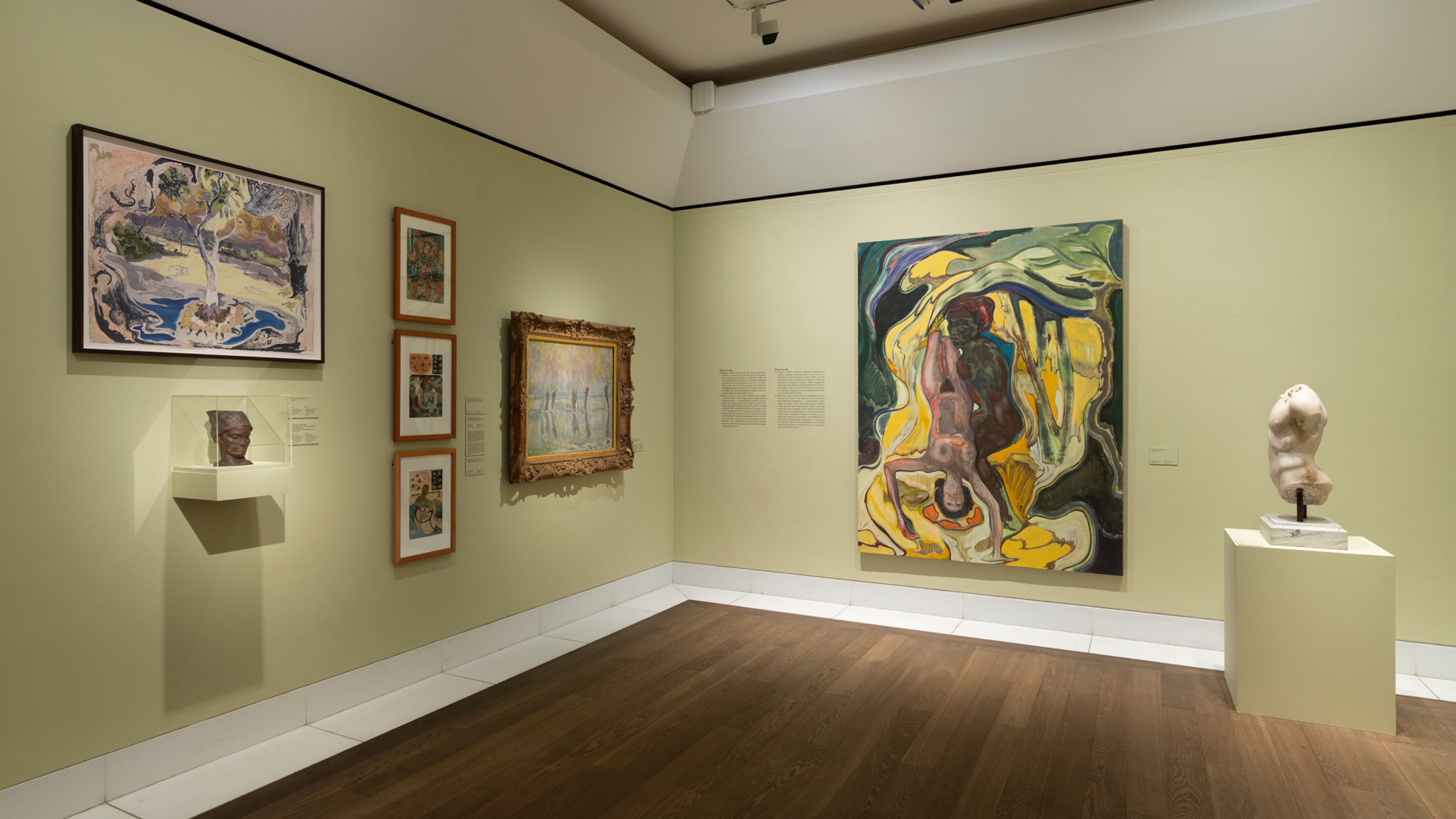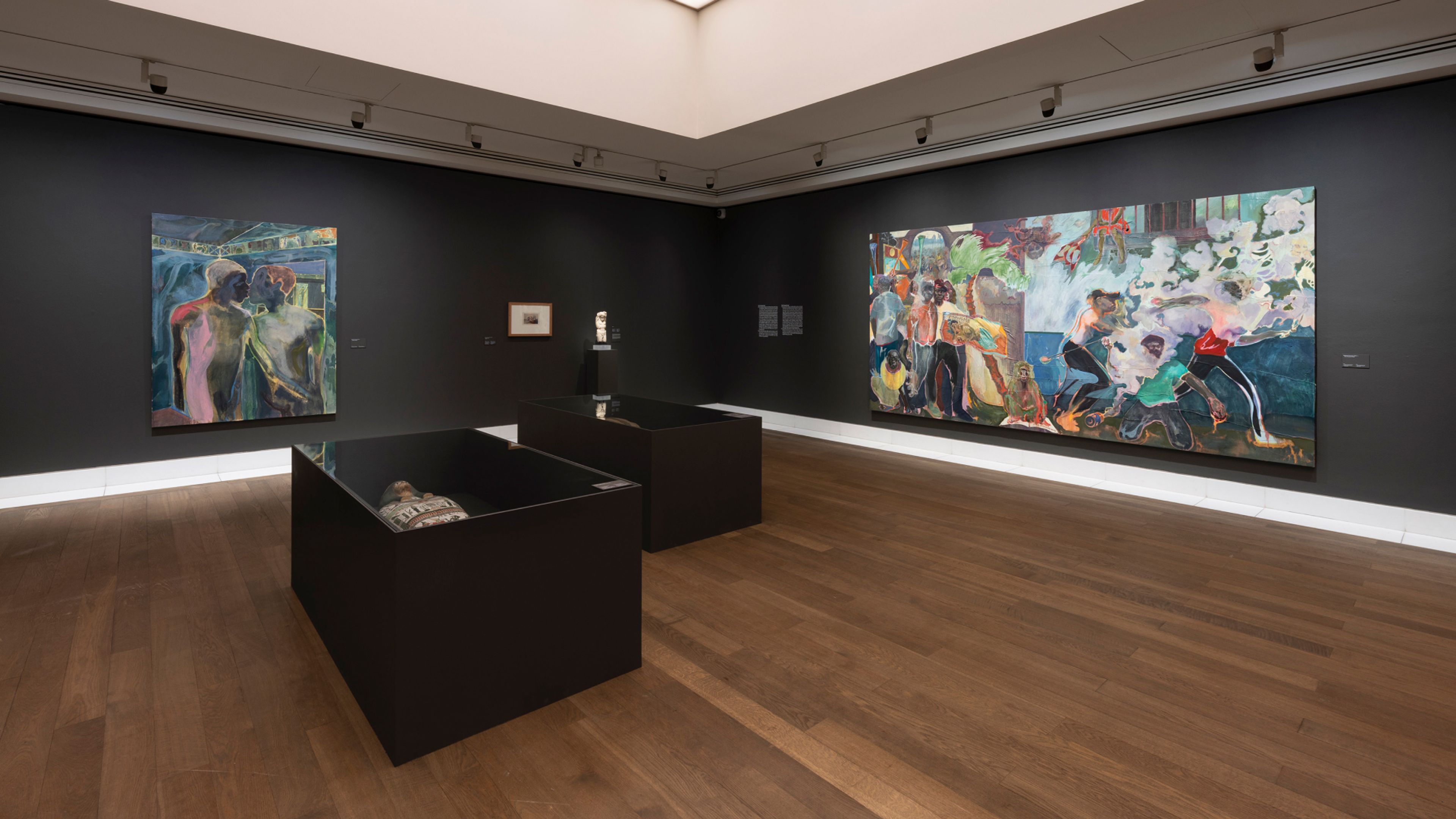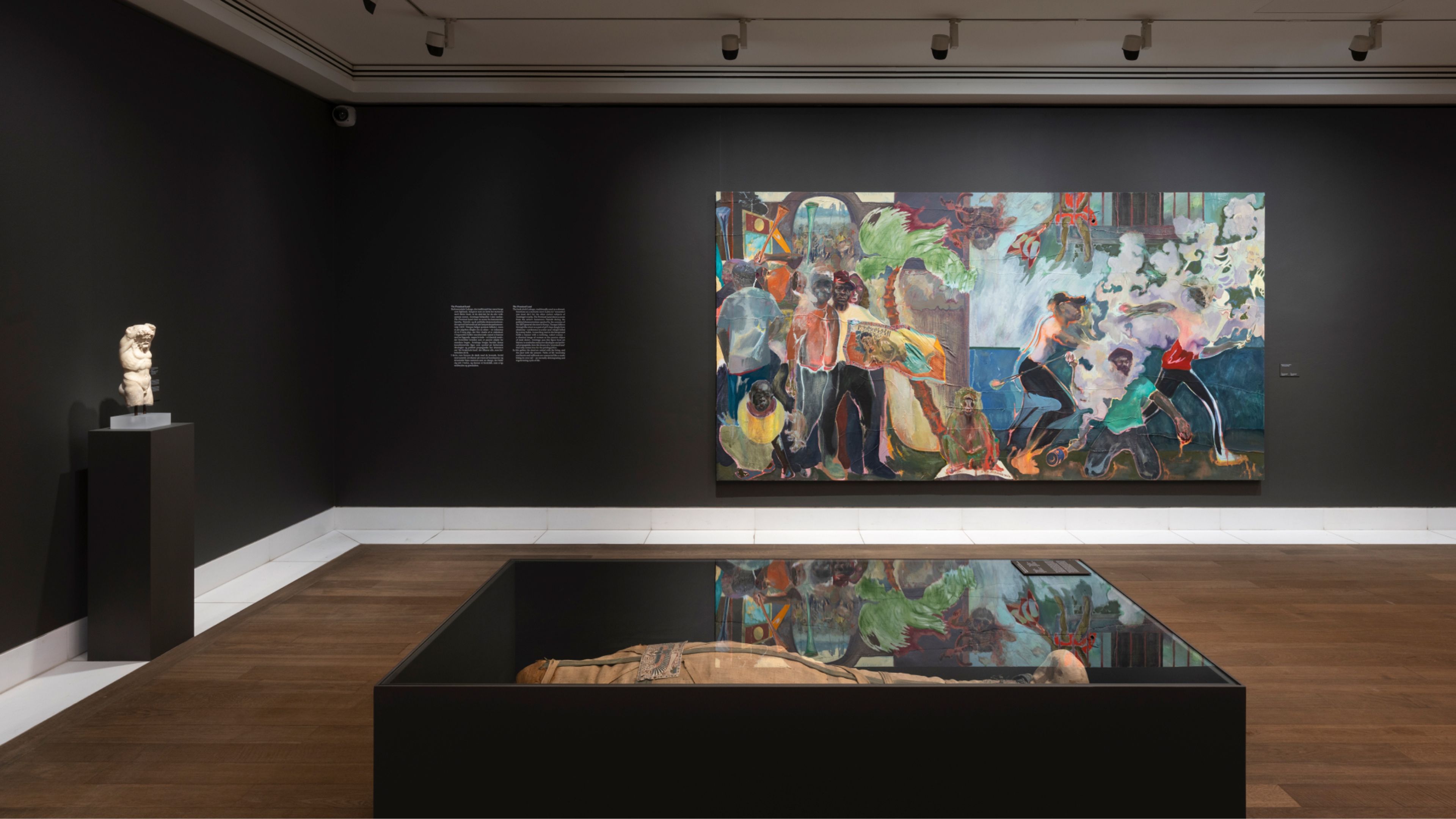Ny Carlsberg Glyptotek, Copenhagen
June 2021
June 10–October 24, 2021 Ny Carlsberg Glyptotek presents the solo exhibition Michael Armitage – Account of an Illiterate Man with Michael Armitage, one of the most interesting voices in contemporary painting. Armitage, who was born in Kenya and trained at the Slade School of Art and the Royal Academy of Arts in London, works between East-African and European traditions carefully selected and freely combined in works by the artist. Armitage’s monumental oil paintings interweave political events, pop culture, social media, folklore and personal memories with mythology and dreamlike imagery. Michael Armitage – Account of an Illiterate Man is the first solo exhibition by the artist in Scandinavia, presenting a series of key works as well as new works on loan from private collectors and major art museums. The exhibition is also the first to present Armitage’s work in a site-specific installation based on the six millennia of art and archaeological artifacts in the Glyptotek’s collections. The installation has been curated in a close collaboration between the Glyptotek and the artist himself. Armitage divides his time between Nairobi and London, and citing the history and culture of both cities forms the basis of his works. As an artist he draws inspiration from Western avant-garde artists such as Goya, Manet and Gauguin, as well as East-African modernists such as Meek Gichugu (b. 1932, Ngecha, Kenya), Chelenge (b. 1961, Kericho, Kenya), and Jak Katarikawe (c. 1938–2018, Kampala, Uganda). He brings different cultures and epochs into play, also by looking back at antiquity at the same time as not losing sight of contemporary news media and the politics of his native Kenya. Armitage’s versatile practice can also be seen in his technique. Instead of conventional canvases he paints on Lubugo, a traditional Ugandan bark cloth the artist discovered at a tourist market in Nairobi. Lubugo is made of the bark of fig trees that is soaked, beaten, then dried, developing holes and deep indents when stretched. This is the organic material on which Armitage’s universe unfolds—a landscape of rich, intricate stories. The Glyptotek continues to present new angles on the museum’s extensive collections of art and ancient artifacts. In close dialogue with Armitage, the museum highlights the artist’s multifaceted cultural heritage by juxtaposing his works with sources of inspiration found in the Glyptotek’s extensive collections. The exhibition takes the form of a series of original, site-specific dialogues in which masterpieces from the French Collection, including Édouard Manet’s The Execution of Emperor Maximilian (1867), Berthe Morisot’s The Wet Nurse (1880), and Paul Cézanne’s The Bathers (1898/1902), can be seen alongside ancient Egyptian creatures of granite and bronze and marble sculptures depicting myths such as that of the god Apollo and King Juba II of Numidia.



